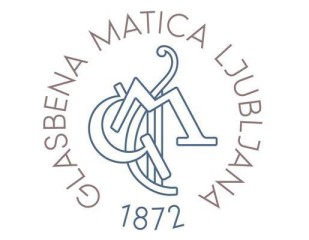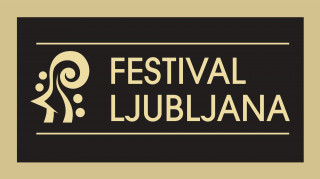
Important information
Barbara Jernejčič Fürst,mezzo- soprano
Gaiva Bandzinaitè, piano
Programme:
Marij Kogoj (rev. by Jakob Jež):
Lieder From The Legacy:
On Silent Fields I Trod (Silvin Sardenko)
Ah, Believe Not (Ivan Cankar)
Matija Bravničar:
Through the Forest (Dragotin Kette)
When You Brought Me Jasmine (Karel Destovnik Kajuh)
Song of the Mother of Three Partisans (Karel Destovnik Kajuh)
To the Mother of a Fallen Partisan (Karel Destovnik Kajuh)
Where Are You, Mother? (Karel Destovnik Kajuh)
Josip Pavčič:
The Harvest Maiden (Ferdo Kozak)
Lullaby II (Oton Župančič)
Ciciban – Cicifuj (Oton Župančič)
Marijan Lipovšek:
To You (Oton Župančič)
Melancholy (Alojz Gradnik)
Lonely Woman (Chinese lyric – Alojz Gradnik)
Marij Kogoj (rev. by Jakob Jež):
Devotion (Fritz Lienhard, trans. Pavel Oblak)
The Snare (Silvin Sardenko)
Lieder or art song is a genre that is firmly rooted in the history of Slovene music, with beginnings dating back to the mid-nineteenth century. The sung word was in fact one of the most powerful ways to express inner moods and to disseminate ideas connected with national awakening. The relatively simple compositional technique meant that lieder could also written by composers with a lesser degree of musical training and performed by amateur musicians. As the nineteenth century became the twentieth, art song gradually lost its national cultural connotations and remained for decades a genre that attracted Slovene composers. Major Slovene composers of leader in the twentieth century include Marij Kogoj, Matija Bravničar, Josip Pavčič and Marijan Lipovšek, whose works are on the programme of today’s concert.
Marij Kogoj (1892–1956) began writing lieder in his first creative flourishing as a composer, and the genre also bookended his career. For a composer of clearly expressionist views, lieder offered the best way to express the intimate feelings of a deep inner life. Kogoj wrote a total of 27 lieder. Together, they document the development of his unique musical language, the central aesthetic criterion of which was always the expression of inner feelings. The lieder from tonight’s programme are among the songs from the composer’s legacy, edited by Jakob Jež. Stopil sem na tihe njive (1914) [On Silent Fields I Trod] is an early work by the young self-taught composer, characterised by an interweaving of texture and a concentrated harmonic structure. Predanost [Devotion], written while he was studying in Vienna (1914–1918), shows the influence of his mentor Franz Schrecker. Ah, ne verjemi (1920) [Ah, Believe Not], Zanka [The Snare] and Vrnitev [The Return] reveal a refinement of compositional technique that points clearly to the composer’s mature works: the broad melodicism became more unsettling, the harmonic structure is increasingly chromatic, polyphonic aspects come to the fore, tonal solidity is relaxed and the formal skeleton is looser, though still clear. Kogoj wrote his last ten lieder after completing his opera Črne maske (1929) [Black Masks]. They already show the signs of the mental illness that would tear the pen of creativity from his hands before it was dry.
A close friend of Kogoj’s was Matija Bravničar (1897–1977), a self-taught composer who emerged after the First World War, following the promptings of Kogoj, his only musical mentor. Bravničar had already written a number of miniatures, little compositions for piano and lieder, but had kept them “in the drawer” for years, hidden from the public. He pushed his compositional ambitions aside until his works came to the attention of Kogoj, who arranged for their public performance (for the first time in 1925) and in this way introduced the young Bravničar to progressive Slovene artistic circles. Among these early compositions, little known today, is the clearly expressionist and deeply subjective song Skozi gozd je šel (1923) [Through the Forest], in which the formal design and the flow of the harmony are completely subordinated to musical expression. Bravničar’s cycle Šest Kajuhovih (six settings of texts by the poet and resistance fighter Karel Destovnik, whose nom de guerre was Kajuh), written following the composer’s long silence in reaction to the horrors of the Second World War, was received with greater acclaim. Tonight’s programme includes four songs from the cycle. The contrast between the old and the new is less pronounced as Bravničar abandons the harshness and tension of his earlier musical language, which now becomes more objective.
A compositional approach entirely different from that of Kogoj and Bravničar is apparent in the works of Josip Pavčič (1870–1949), a composer who paved the way for modern Slovene musical culture at the start of the twentieth century while remaining loyal to the Late Romantic mentality – he was never interested in more modern compositional trends. Pavčič was principally a teacher but he also left an important body of compositions, enriching Slovene musical literature with works for piano, compositions for choir, and lieder. Notable in this last genre are his settings of poems from Oton Župančič’s collection of children’s poetry Ciciban, distinguished by their sensitivity and originality of expression, formal completeness and technical accomplishment, and a piano part whose autonomy is evidence of the composer’s own proficiency as a pianist. The composer was adept at capturing the character and mood of the text and giving it appropriate musical form. Alongside two Župančič settings – Uspavanka II (Lullaby II – dedicated to “the little Ciciban Sammykins of the Hubads”, who would grow up to be the distinguished conductor Samo Hubad) and Ciciban – Cicifuj (both 1917), the programme includes Ženjica (1921) [The Harvest Maiden], the setting of a text by Ferdo Kozak.
One of Pavčič’s most successful pupils was Marijan Lipovšek (1910–1995), who like his teacher would never break radically with tradition. The tension between the old and the new is reflected in his compositions by a modern musical language which in compositional terms is still anchored in the musical traditions of the past. As a composer Lipovšek wanted freedom of expression, but not freedom at any cost. His works are expressionist in character but neoclassical in their use of musical resources. Lipovšek had a particular affinity for vocal music and is considered a master of the art song. He wrote a large number of lieder, particularly in his early and late periods. His first compositions for voice and piano, written between 1925 in 1930, were published together as Devet samospevov [Nine Lieder] in 1952. They include the songs Tebi [To You], Melanholija [Melancholy] and Osamljena [Lonely Woman]. In them, the stages of development of the composer’s mature style are revealed: the harmonic technique gradually approaches free tonality and the formal structure framed in a solid skeleton is closely adapted to the content of the text. The voice, which has a clearly declamatory role, carries the literary message, while musical expression is provided by the richly conceived piano accompaniment.



